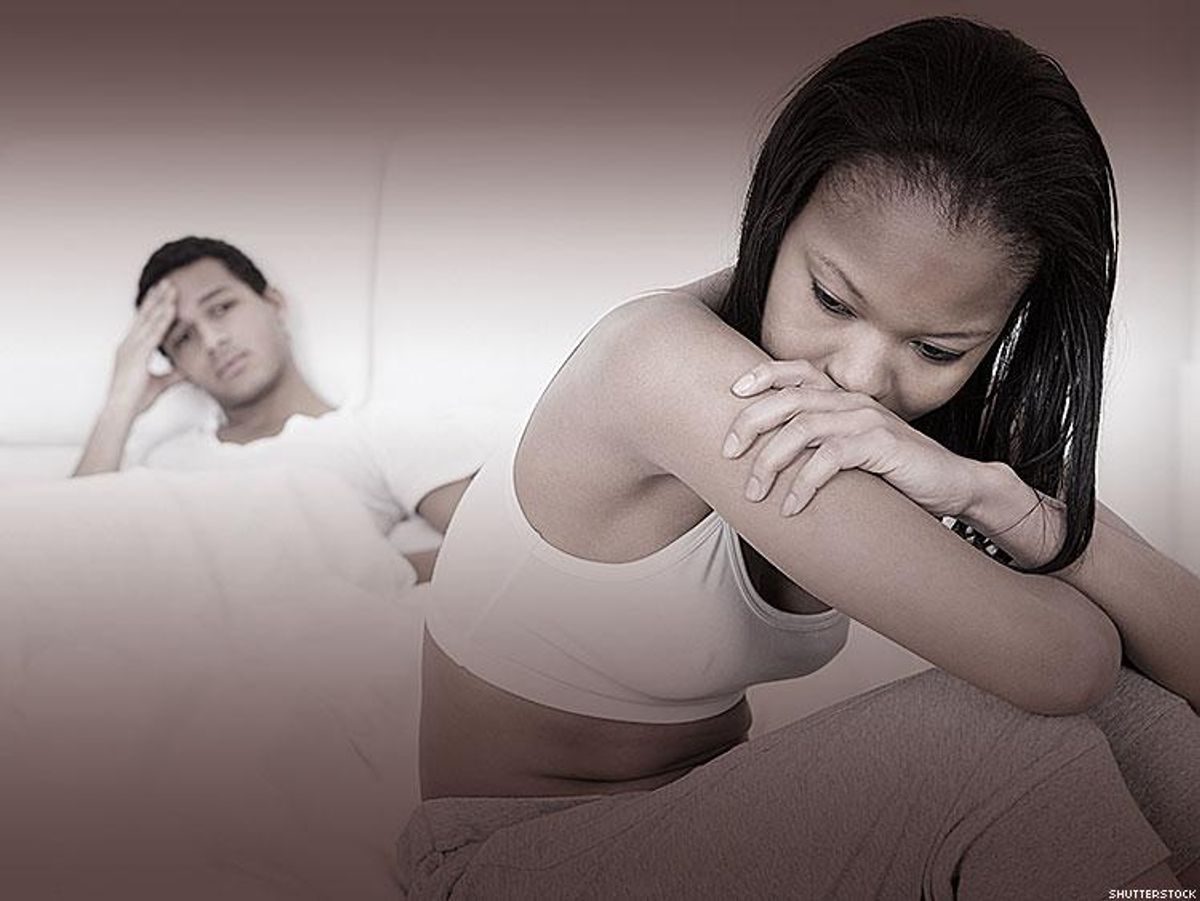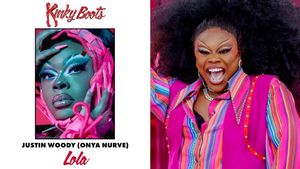Intimate partner violence isn't just a leading risk factor for women in Sub-Saharan Africa. Its frequently a precursor to HIV right here in America as well.
Intimate partner violence (previously referred to as "domestic violence") includes physical or sexual violence (including rape) as well as threats of physical or sexual violence, stalking and psychological cruelty or coercion by a current or former intimate partner. Being the target of that kind of violence increases the likelihood of a woman becoming HIV positive.
In the U.S. approximately one in four people living with HIV are women. The majority new HIV cases can be traced to transmission through heterosexual contact (84 percent).
Unfortunately, many of these women are unable to take preventative measures, such as insisting that their partners wear condoms. In fact for many women, simply making the suggestion can lead to violence.
Which leads to the inescapable conclusion that violence against women is fueling the HIV epidemic. Having been physically or sexually abused is the No. 1 precursor to a woman being infected with HIV. Approximately 1 in 7 new infections in women can be directly attributed to either male partner violence or women’s lack of relational power. For many of these women their only HIV “risk factor” is having sex with a (primarily male) partner who is willing to use violence to get what they want. Make no mistake; women survivors of abuse are an “at-risk” group.
It's time to talk about that violence and its relationship to the global HIV epidemic.
I’m not the first to say this but it bears repeating: globally, HIV is now a gender-based disease; spread by men, but suffered by women. Even in the U.S., gender-based and intimate partner violence aimed at women greatly exacerbates HIV risk.
Women and girls who have experienced violence have a substantially increased risk of HIV infection, a risk that is heightened directly (through sexual violence) and indirectly. Being violated leads women to increase risky behavior; an inability to negotiate safer-sex practices with a partner further compounds the risk.
Women abuse survivors are in double jeopardy: more likely to be infected by an abusive partner and then once positive, more likely to become a target of abuse (by that partner and others). Consider these stats of women in the U.S.:
* Findings from the 2010 National Intimate Partner and Sexual Violence Survey (NISVS) indicate that 35 percent of women in the United States have experienced rape, physical violence, or stalking by an intimate partner in their lifetime. 6.9 million women experienced these forms of violence in the previous year.
* Nearly 1 in 2 women have experienced other forms of sexual violence in their lifetime (e.g., sexual coercion, unwanted sexual contact).
* In 2012, the National Coalition of Anti-Violence Programs released the Intimate Partner Violence in Lesbian, Gay, Bisexual, Transgender, Queer (LGBTQ), and HIV-Affected Communities report, indicating that transgender respondents were twice as likely as cisgender individuals to face threats/intimidation within violent relationships, and 1.8 times more likely to experience harassment within violent relationships.
* HIV-positive women in the United States experience intimate partner violence rates (55 percent) double the national average.
* Among HIV-positive women, rates of childhood sexual abuse (39 percent) and childhood physical abuse (42 percent) were more than double the rate among the general population.
* Women in relationships with violence have four times the risk for contracting STIs, including HIV, than women in relationships without violence.
If you look at the risk factors like drug use and sex work and so on, you'll see many, if not all, can be linked back to childhood abuse, sexual assault, or domestic partner violence. For example, women who experience gender-based violence are more likely to report risk factors like unprotected sex, multiple partners, injection drug use, and alcohol abuse. Early sexual violence as a child increases a woman’s HIV risk throughout her life.
Study after study since 2004 — show that HIV-positive women were more likely to report a history of physical violence, sexual coercion, or gender inequality because women subjected to those forms of violence are less likely to request condom use, more likely to have partners who have risky sex behaviors outside their relationship, and more likely to have genital tract injuries associated with sexual violence (which increase HIV susceptibility).
And once those women seroconvert and are HIV-positive, they are less likely to get treatment, more likely to go off their medication, and to miss health care appointments. Eighty-eight percent of women who are living with HIV know their status but only 32 percent have the virus under control.
The National Women and Girls HIV/AIDS Awareness Day serves as a great reminder that any resolution to the problem of women and HIV belongs not just to governments, and public health workers, or non-profit organizations, but to all of us. Violence is a problem with no easy answer.
While there are a number of things we need to do, the first is to include men in the solution. We cannot solve this without them. The links between violence, inequality, and risky behavior are clear, but more must be done to find ways to reduce each of them.
Research on men in methadone treatment programs in New York who admitted to being perpetrators of intimate partner violence found that they were far more likely to report multiple sexual partners, thus increasing their risk for HIV, and some researchers have postulated that abusive men are more likely than non-abusers to be HIV positive or to be infected with other sexually transmitted infections, which have been shown to make women more vulnerable to HIV transmission.
How do we combat this issue?
First, with strong national leadership condemning intimate partner and gender-based violence, and with programs that engage men in ways to prevent gender-based violence while encouraging them to also adopt HIV prevention strategies.
Altering gender-based abusive behaviors and sexual risk behaviors of men is not a pipe dream. In the Los Angeles-based MAALES (Men of African American Legacy Empowering Self) program, young bisexual black men reduced their risky sexual behavior but also developed healthier, less abusive relationships. Every community needs a program tailored to their own area’s cultural needs. Men who are violent are trapped in their own cycles that we need to uproot. It can be done.
We must empower women, as well. We need to hold governments, health officials, scientists, and organizations accountable for empowering women. They can start with these small steps:
• Create more discrete ways to test and treat HIV, including making HIV testing a part of routine medical care. Imagine if HIV testing was as routine as a pap smear or a cholesterol test?
• Increase intimate partner violence screening and HIV testing for girls and women and encourage concurrent screening where possible.
• Train domestic violence counselors on the links between HIV and violence and encourage them to promote testing and HIV risk reduction. Train HIV clinics in how to spot and deal with incidents of abuse.
• Make sure that transgender and bisexual women and men are included in protective laws, outreach, and routine medical treatment and that their voices are heard above those unfamiliar with their experiences.
• Find better ways to address lifecycle trauma (since we know its associated with treatment failure) and develop and implement models that integrate trauma care with HIV screening/treatment.
• Address females at all life stages. Too often, because it’s an safe political sale, we focus on prevention or care for women who are mothers or pregnant women with HIV and while those groups do need care, motherhood is only one part of a woman’s complete lifecycle in which she is susceptible to HIV. Many women who contract HIV will never be mothers, by choice or circumstance.
• Develop more programs (leadership training, microfinancing, etc.) that add to women’s economic resources, confidence, and ability to gain shared decision-making power. Microfinance programs, for example, offer economic independence and strengthened social networks. Once women are economic contributors to their households they are often better able to challenge inappropriate sexual roles and abusive behaviors.
• Develop and increase access to female-controlled methods of HIV prevention like vaginal microbicide.
• Demand leaders throw their political weight behind expanding sexual and reproductive health services, legislating (and enforcing) gender equality, and ending violence against women.
• Strengthen school-based HIV prevention and education programs.
• Change existing HIV reporting laws and decriminalize HIV. Criminalization laws contribute to climate of fear and stigma while laws that require disclosure can make women even more susceptible to intimate partner violence. Laws need to account for circumstances where disclosure of HIV status may subject the disclosing partner to violence.
Most of all...
We need to to this work across multiple platforms — within health care, employment, law, and media — and address all facets of gender-based violence (child molestation, intimate partner violence, rape, etc.) to make sure everyone understands the scope of the intersection between HIV and violence against women and girls and is equipped to combat it.




































































